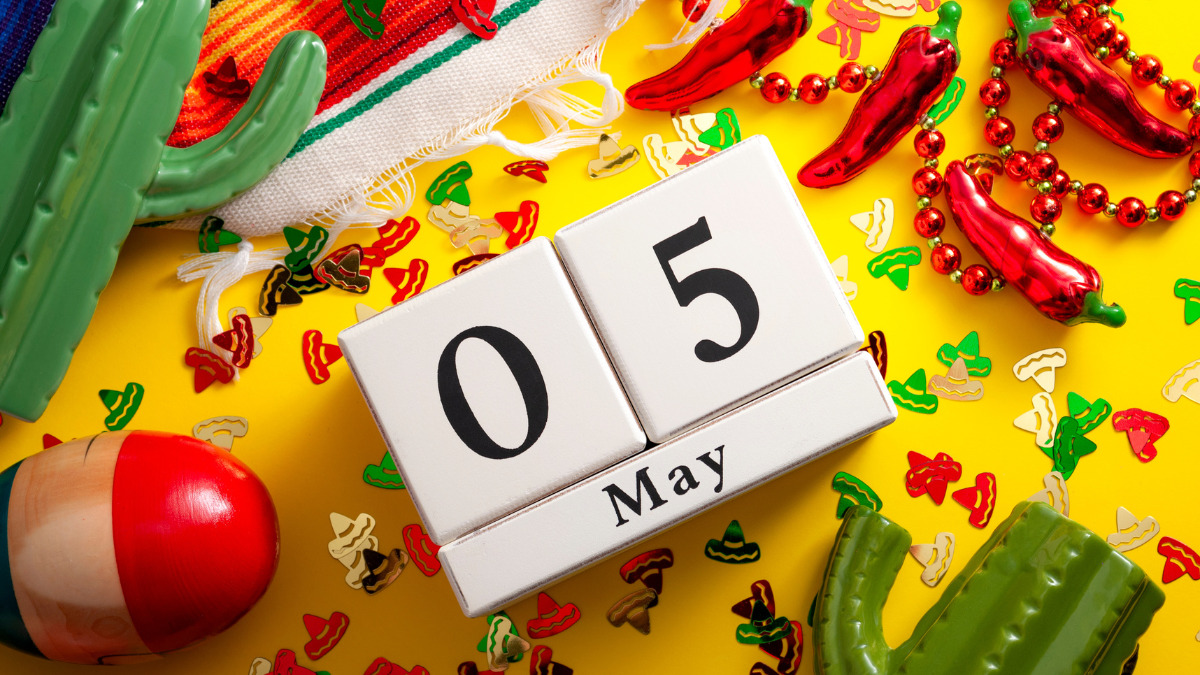

How to add cultural events to your marketing calendar

Cinco de Mayo is upon us. For many of us, this day conjures up images of brightly colored traditional Mexican garb, mariachi bands, and tequila. It’s a day of celebration. Of embracing Mexican culture or your Mexican heritage.
Any holiday that invokes feelings of happiness and joy is a vital marketing opportunity. Beer, wine, and liquor companies discovered this about Cinco de Mayo back in the 1980s. Today, beer sales on the holiday are on a par with the Superbowl. So how do you add days of cultural significance to your marketing, without causing offense or upsetting people?
I believe that education and understanding are essential if you’re planning on adding cultural events to your marketing calendar. You’re likely planning on marking these sorts of days because they’re relevant to you or your target audience. A little bit of understanding goes a long way.
So, since it’s around the corner, let’s use Cinco de Mayo as an example.
The history of Cinco de Mayo
Cinco de Mayo is not Mexican Independence Day. It is often confused with it, but the fifth of May celebrates the date of the Battle of Puebla in 1862, during the Franco-Mexican war.
As a history buff, I couldn’t resist finding out more. Mexico, in a state of financial ruin following a long and brutal civil war, was invaded by French forces who intended to use the country to grow its empire.
Defeat was thought to be inevitable. At the time, under the rule of Napoleon III, France had one of the best armies in the world. They swept through Mexico, forcing the new government into hiding, until the morning of May fifth.
6,000 French troops marched on the town of Puebla de Los Angeles which was being defended by a ragtag crew of 2,000 Mexican fighters. After a day of battle, the French were forced to retreat having lost nearly 500 soldiers in the clash.
A day of significance
The victory was short-lived and France went on to win the war. Nevertheless, the Battle of Puebla represented a symbolic victory for Mexico and bolstered the resistance movement.
Cinco de Mayo was immediately declared a national holiday.
However, in Mexico and for many Mexicans it’s a day of significance, not importance. It generally takes a backseat to events such as Mexican Independence Day on September 16, which commemorates Mexican liberation from Spanish rule.
International recognition of Cinco de Mayo
So, if it’s not widely celebrated in Mexico, how has it become an internationally renowned holiday?
Recognition of Cinco de Mayo in the US started in the 1940s as part of the Chicano Movement. Inspired by and entwined with the Black Power Movement, El Movimiento as it’s referred to, worked to embrace a Chicano/a identity and worldview that combatted structural racism, encouraged cultural revitalization, and achieved community empowerment by rejecting assimilation. The movement raised awareness about Cinco de Mayo because they identified with the victory of Mexicans over European invaders.
Consequently, in the US, Cinco de Mayo is widely considered to be a day to celebrate Mexican culture and heritage, especially in areas such as California with large Mexican-American populations. Across the United States festivals are held embracing Mexican culture, mariachi music, Mexican folk dancing, and traditional foods. In the UK, bars, restaurants, and nightclubs hold annual celebrations to mark the day.
Ways to add cultural holidays to your marketing calendar
Now we know a bit more about Cinco de Mayo, it’s time to get thinking about how to add it to your ongoing marketing activity.
1. Encourage and celebrate diversity
Brands like Not on the High Street frequently promote the small businesses that use their site to sell goods. During periods of cultural significance like Eid or Passover, newer ones like Black History Month or Cinco de Mayo, why not focus a spotlight on the diverse businesses you work with.
Maybe you were founded by a Black entrepreneur, or you have offices, employees, or partners based in Mexico or your suppliers in Turkey who observe Eid. Use your email marketing and social media channels to give them a chance to be seen and heard.
Customers are looking more closely than ever at business practices to ensure the brands they interact with have the same values as them. Proudly and loudly sharing your diversity is a winning tactic all around.

2. Add value to the experience
Your people aren’t the only thing you can shine a spotlight on. What are you selling that can help you connect with your audience during these cultural holidays?
As Cinco de Mayo approaches, consider what you can tell your customers about how your brand or product connects with Mexico. Maybe you’re a drinks brand that uses agave in your recipe, or you’re an interior design company that sells Frida Kahlo prints. Give customers an insight into the versatile plant or educate shoppers on Kahlo had on Mexican culture.

Saatchi Art curates its email marketing to showcase Ukrainian art artists in its efforts to promote its fundraising for the Ukrainian Relief Effort. The customer knows that by shopping with this brand, they’re helping to have a positive impact on the world.
3. Maximize your social channels
Not every event in the calendar will require its own campaign. You don’t need to offer customers a flash sale or discount code every time there’s an event on your calendar.
Social media is the best channel you have on hand to communicate your brand personality. It’s where your brand becomes human to the customer. Therefore, it’s the best channel to use when you want to acknowledge a holiday that might be of significance to your audience but doesn’t fit into your email marketing campaign plan.
Contests are a great way to engage with new and existing followers during culturally significant holidays. Tag and share entries help turn your customers into brand advocates while offering a free giveaway in celebration of the holiday to drive more new followers to interact with you.
Conclusion
Your audience is diverse, so your marketing should be too. The key to successful marketing around cultural holidays lies in your understanding of the day and your audience.
Simply doing something for the sake of doing it isn’t enough for today’s switched-on consumer. If you’re looking to create strong, long-term connections between your brand and your audience, you need to strike a delicate balance. Broad statements of support that have no substance behind them are being called out by vigilant customers.
As you begin to incorporate these days into your marketing, keep things simple and scale and grow from there. This will help you learn what lands well with your audience; what holidays, causes, movements, and cultures they feel a connection to.
Start small, scale quickly, and deliver big.
Contents
Jenna Paton, Content Marketing Manager
Jenna expertly writes thought-leadership content about cross-channel marketing and customer engagement and manages the creation and execution of Dotdigital's content marketing strategy.
Keep reading





